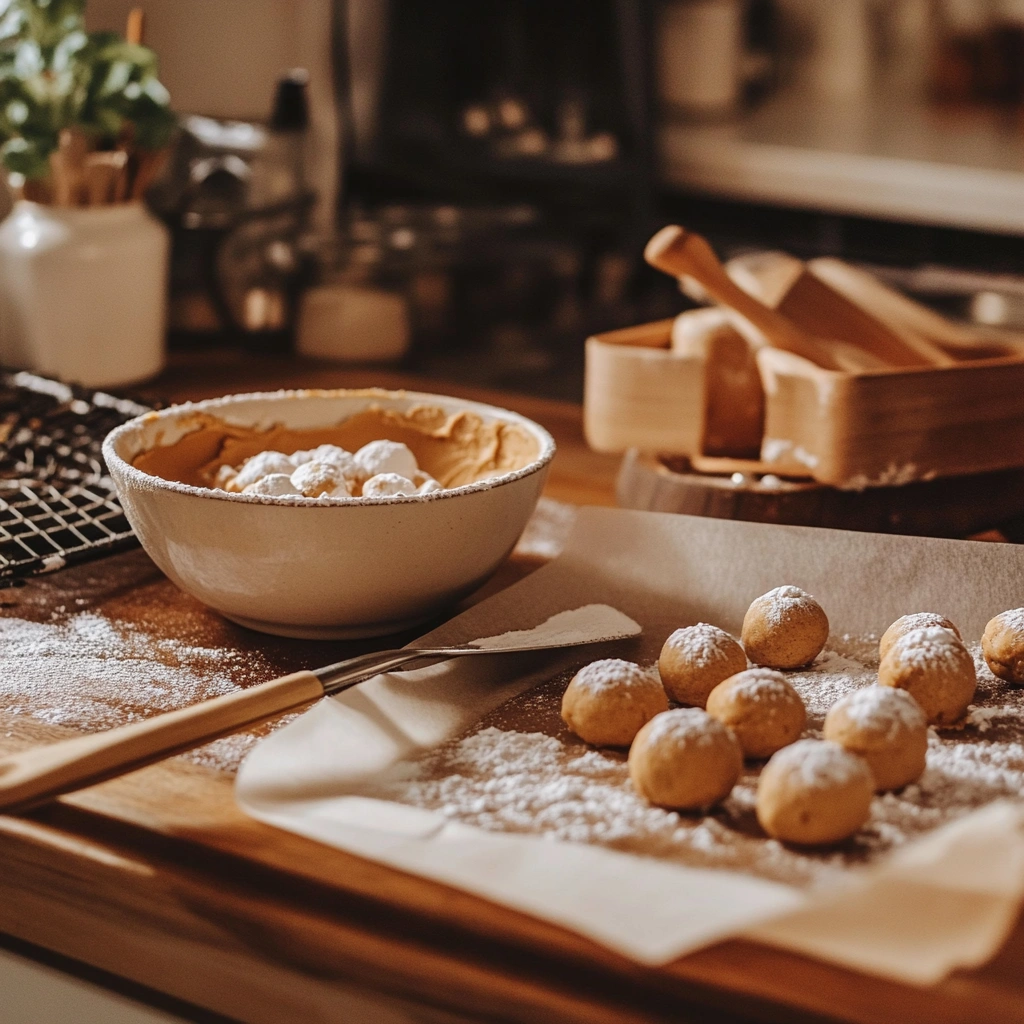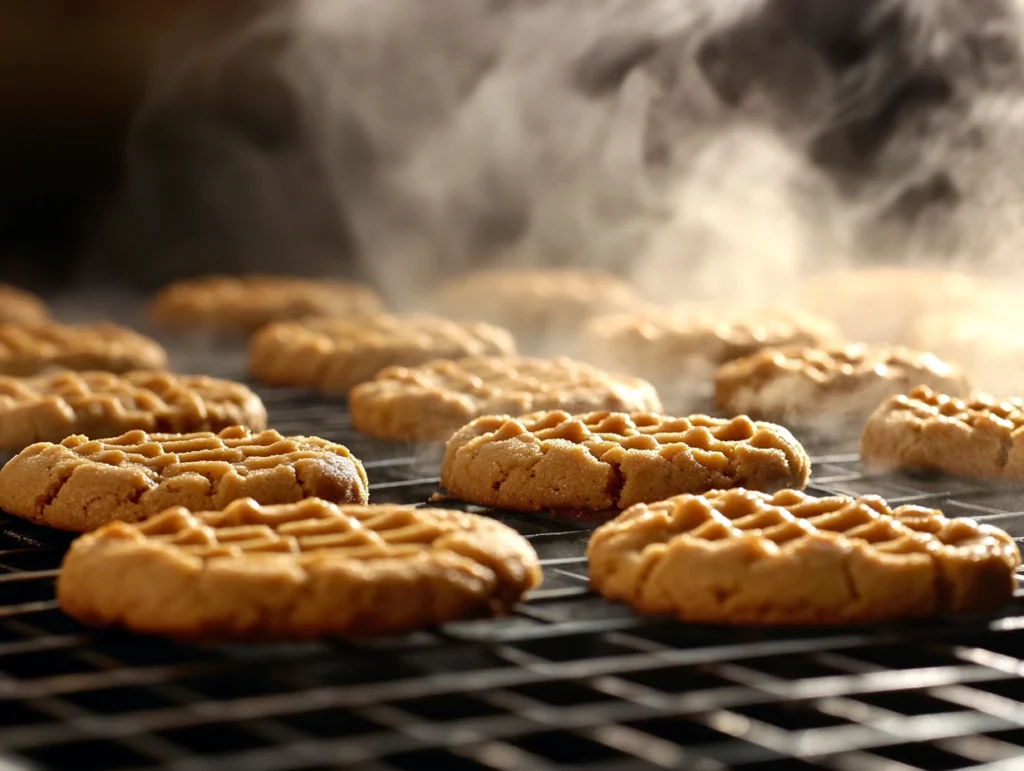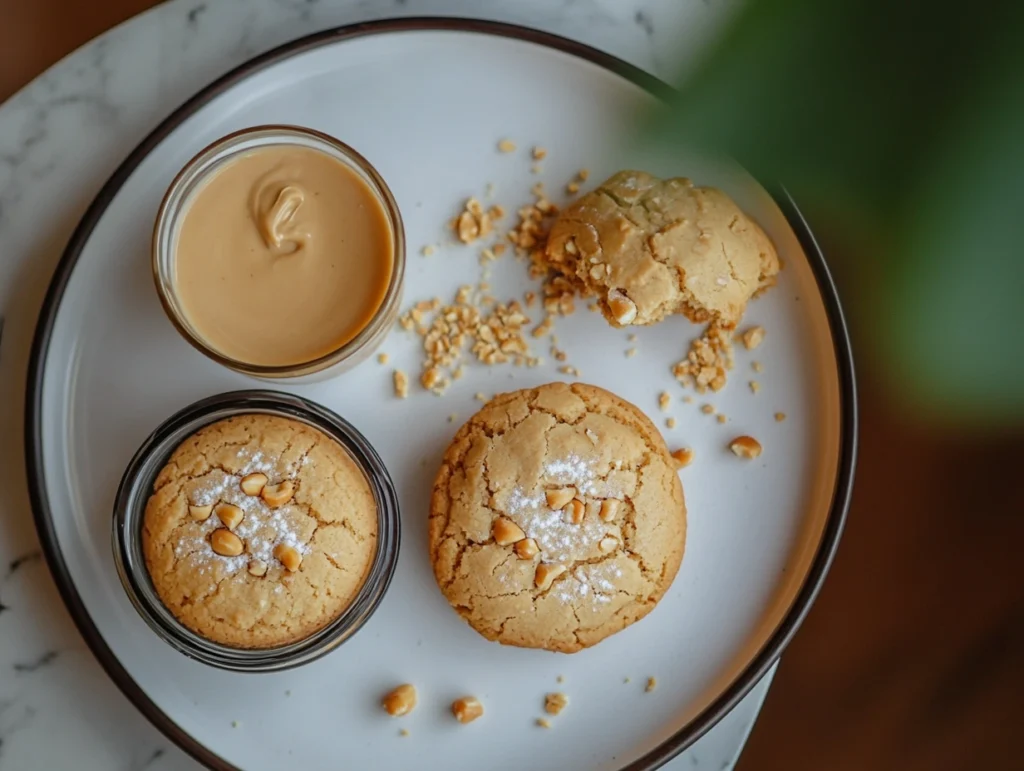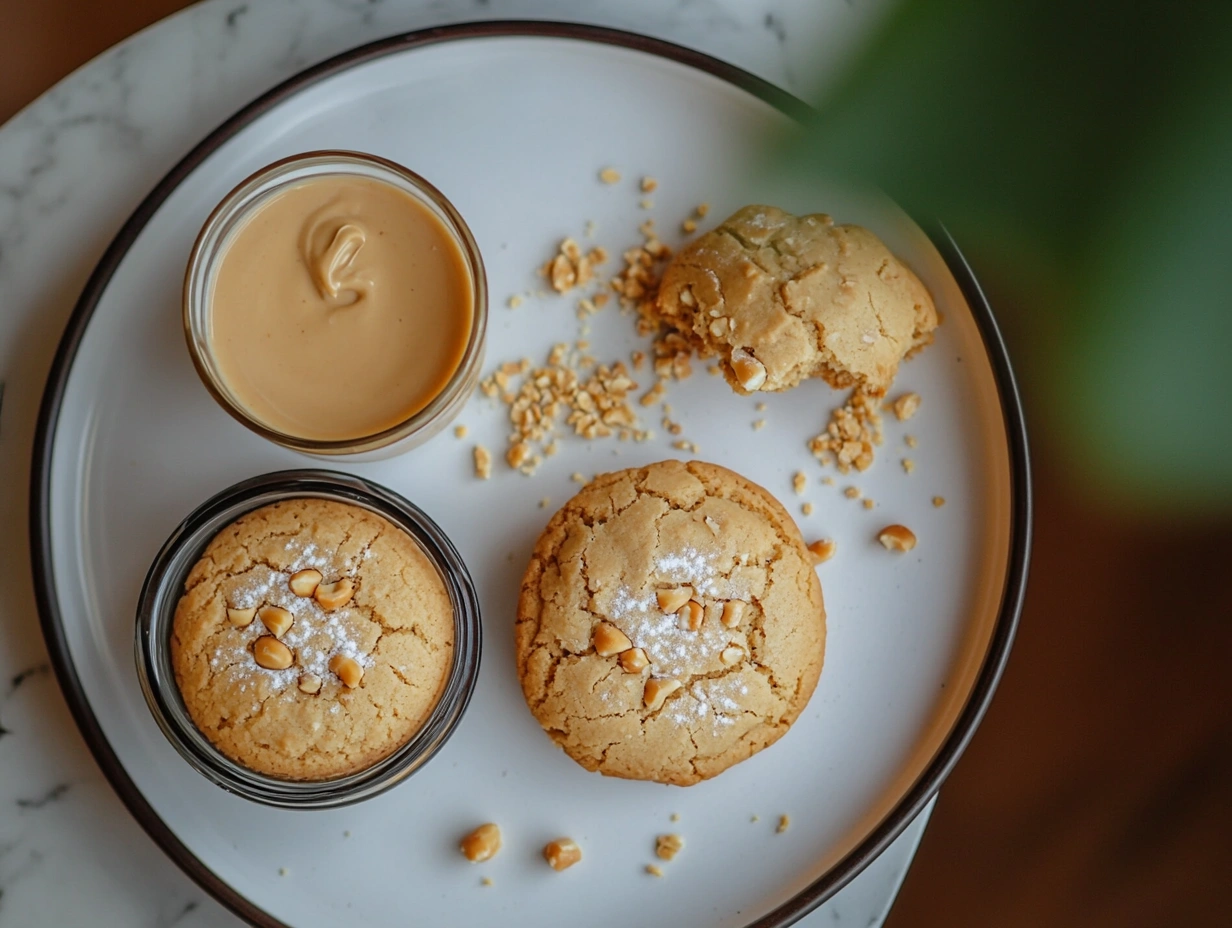1. Introduction
Peanut butter cookies, especially 2-ingredient PB cookies, have long been a favorite in the world of baking. Their rich, nutty flavor, combined with a satisfying soft yet chewy texture, makes them a beloved treat. Originating in the United States in the early 20th century, peanut butter cookies were initially a creative way to incorporate peanut butter, a pantry staple, into desserts. Today, 2-ingredient PB cookies stand out as a simple and quick way to enjoy this classic treat.
What makes 2-ingredient PB cookies so appealing? In a world where everyone seems to be short on time, recipes that require only two ingredients are lifesavers. Whether you’re a beginner baker or someone looking for a quick dessert fix, this recipe fits the bill. With just peanut butter and a sweetener of your choice, you can create cookies that are not only delicious but also incredibly easy to make. Perfect for unexpected guests, midnight cravings, or simply as a fun kitchen experiment, these cookies are proof that baking doesn’t have to be complicated.
2. Understanding the Ingredients
2.1. Peanut Butter
Peanut butter is the cornerstone of this recipe. Its creamy, rich texture and nutty flavor make it the perfect base for cookies. However, not all peanut butter is created equal. Choosing the right type can significantly impact your cookie’s texture and flavor.
- Natural Peanut Butter: Made with just peanuts and sometimes a pinch of salt, this type is an excellent option for health-conscious bakers. Its oil content makes the cookies moist, but its less sweet profile may require adjustments in the sweetener.
- Processed Peanut Butter: Brands like Jif or Skippy contain added sugars and oils, resulting in a sweeter and creamier cookie. These are ideal for those who prefer a more traditional, dessert-like taste.
- Crunchy vs. Smooth: Crunchy peanut butter adds texture, giving the cookies a delightful bite. Smooth peanut butter, on the other hand, creates a uniform dough and a softer finish.
Why Peanut Butter Works in Baking
Peanut butter serves as both the binding agent and the flavor driver in this recipe. Its high fat content ensures that the cookies hold their shape while baking, while its natural oils prevent them from drying out. Moreover, the nutty flavor pairs wonderfully with various sweeteners, making it a versatile choice for simple desserts.
2.2. The Sweetener: Your Second Ingredient
The second ingredient in this recipe plays a crucial role in balancing the savory richness of peanut butter. The choice of sweetener can also affect the texture and nutritional value of the cookies.
2.2.1. Powdered Sugar
Powdered sugar is the most common choice for traditional 2-ingredient peanut butter cookies. It dissolves easily, creating a smooth, pliable dough that’s easy to work with. The sugar caramelizes slightly during baking, adding a subtle crunch to the cookie’s exterior while keeping the center soft.
2.2.2. Maple Syrup
For those seeking a more natural option, maple syrup is an excellent alternative. Its liquid nature requires slight adjustments, such as chilling the dough before shaping, to ensure it doesn’t spread too much during baking. The resulting cookies are slightly softer and have a delightful hint of maple flavor.
2.2.3. Medjool Dates
Health-conscious bakers often turn to Medjool dates for their natural sweetness. To use dates, blend them into a paste and combine them with peanut butter. The cookies made with dates are denser but have a rich, caramel-like flavor that’s hard to resist.
3. The Baking Process
3.1. Mixing the Ingredients
Creating the perfect dough for 2-ingredient PB cookies is simpler than you might think, but a few key tips can ensure your cookies turn out flawless every time.

Alt Text: Mixing peanut butter and powdered sugar for 2-ingredient PB cookies with cookie dough balls on a baking sheet.
Start by selecting your peanut butter and sweetener of choice. Measure the ingredients precisely—typically, you’ll need a 1:1 ratio (e.g., 1 cup of peanut butter to 1 cup of powdered sugar). If you’re using a liquid sweetener like maple syrup, consider reducing the amount slightly to prevent the dough from becoming overly sticky.
Place the peanut butter in a large mixing bowl and add the sweetener gradually. Use a sturdy spoon or spatula to mix the two ingredients until fully combined. The dough should be thick and pliable, without any lumps. If you’re working with a natural peanut butter that separates, stir it thoroughly before measuring to ensure even consistency.
Pro Tips:
- If the dough feels too dry, add a teaspoon of water or milk to bring it together.
- For sticky dough, refrigerate it for 15–20 minutes before handling.
3.2. Shaping the Cookies
Once your dough is ready, it’s time to shape your cookies. This step is where the fun truly begins, allowing you to customize the size and style of your treats.

Alt Text: Freshly baked 2-ingredient PB cookies cooling on a rack with crisscross fork marks.
Scoop out small portions of dough, roughly the size of a tablespoon, and roll them into balls. To ensure even baking, aim for uniformity in size. Arrange the dough balls on a parchment-lined baking sheet, leaving about 2 inches of space between each one.
Flattening with Fork Marks
The hallmark of a classic peanut butter cookie is its crisscross pattern, created with a fork. Gently press the tines of a fork onto the dough ball to flatten it slightly, then rotate the fork 90 degrees and press again to form the iconic grid. Beyond aesthetics, this step helps the cookies bake evenly by spreading them out and ensuring consistent thickness.
Pro Tips for Fork Marks:
- Dip the fork in sugar or flour to prevent sticking.
- For a twist, use patterned rolling pins or stamps for unique designs.
4. Variations and Enhancements
4.1. Adding Chocolate Chips
For those looking to elevate their 2-ingredient PB cookies, adding chocolate chips is a game-changer. The rich, creamy peanut butter pairs beautifully with the sweet, melty goodness of chocolate.
- How to Add Them: Fold chocolate chips into the dough after combining the peanut butter and sweetener. About ½ cup of chips per batch is a good starting point.
- Best Options: Mini chocolate chips distribute more evenly, while dark chocolate chips add a touch of sophistication.
When baked, the chocolate chips soften, creating delightful pockets of gooey sweetness in every bite.
4.2. Incorporating Nuts
If you love an extra crunch, try mixing chopped nuts into your dough. Almonds, pecans, or walnuts work particularly well, complementing the nutty flavor of peanut butter. Add ¼ to ½ cup of chopped nuts to your dough for a satisfying texture upgrade.
Pro Tip: Toast the nuts lightly before mixing them in. This step enhances their flavor and adds a deeper, roasted aroma to the cookies.
5. FAQs Section (Based on PAA Questions)
5.1. Why Do You Put Fork Marks in Peanut Butter Cookies?
Fork marks in peanut butter cookies serve both practical and aesthetic purposes. This tradition dates back to the early recipes for peanut butter cookies, where flattening the dough was necessary to ensure even baking.
Peanut butter cookie dough is denser than other cookie doughs due to the lack of leavening agents like baking powder or soda in simpler recipes. The fork marks help flatten the cookies, allowing heat to penetrate evenly and ensuring the centers cook through without over-baking the edges.
Additionally, the crisscross pattern has become an iconic design, instantly signaling the cookie’s peanut butter flavor. It’s a simple yet effective way to combine function and style in baking.
Pro Tip: If you want to stick with tradition but avoid fork marks, you can use the bottom of a glass to flatten the dough. Alternatively, sprinkle some sugar on the glass before pressing for a subtle decorative touch.
5.2. What Are the Ingredients in Girl Scout Peanut Butter Cookies?
Girl Scout peanut butter cookies, specifically the Do-si-dos and Tagalongs, have a more complex ingredient list than homemade 2-ingredient PB cookies. Here’s a breakdown:
- Do-si-dos: These sandwich-style cookies consist of a peanut butter-flavored filling sandwiched between two crunchy oatmeal cookies. Ingredients typically include enriched flour, oats, peanut butter, sugar, oils, and flavoring agents.
- Tagalongs: These are crisp cookies layered with peanut butter and covered in a rich chocolate coating. Their ingredients include flour, peanut butter, cocoa powder, sugar, and various stabilizers and emulsifiers to maintain texture and freshness.
While these cookies are delightful in their own right, they require significantly more effort and ingredients to replicate. In contrast, 2-ingredient PB cookies offer a simpler, faster way to enjoy the nutty goodness of peanut butter without the additional steps.
5.3. What Is the Secret to Chewy Cookies?
Achieving the perfect chewiness in peanut butter cookies is a combination of ingredient selection and technique. Here are a few tips to ensure your cookies are irresistibly chewy:
- Underbaking Slightly: Remove the cookies from the oven when the edges are set but the centers still look soft. They will continue to cook as they cool, maintaining a chewy texture.
- Using Smooth Peanut Butter: This type of peanut butter helps create a uniform dough, which bakes evenly and retains moisture better than chunky varieties.
- Choosing the Right Sweetener: Liquid sweeteners like maple syrup or honey contribute to a softer, chewier cookie, as they trap more moisture than powdered sugar.
- Cooling on the Baking Sheet: Allowing cookies to cool on the baking sheet for 5–10 minutes after removing them from the oven helps them firm up without losing their soft interior.
5.4. What Are the Ingredients in Great Value Peanut Butter Cookies?
Great Value peanut butter cookies, a store-brand favorite, typically contain a mix of basic ingredients like enriched flour, sugar, peanut butter, and oils. These cookies are mass-produced to maintain consistency in flavor and texture, often including preservatives and stabilizers to extend shelf life.
Homemade 2-ingredient PB cookies differ in their simplicity and freshness. By using just peanut butter and a sweetener, you skip the artificial additives, resulting in a purer, more natural flavor. Plus, homemade cookies allow you to customize sweetness and texture to your preference.
6. Storage and Serving Tips
6.1. Proper Storage Methods
Once you’ve baked your 2-ingredient PB cookies, proper storage is key to maintaining their freshness and flavor. Unlike cookies with a higher moisture content, peanut butter cookies tend to stay fresh longer due to the natural oils in peanut butter.

Title: Serving 2-Ingredient PB Cookies
- At Room Temperature:
- Place cookies in an airtight container to prevent them from drying out.
- Store at room temperature for up to 7 days.
- Add a slice of bread to the container to help retain moisture and keep the cookies soft.
- In the Refrigerator:
- If you live in a warm climate or prefer a firmer cookie, refrigerate them.
- Use an airtight container or resealable bag to prevent the cookies from absorbing odors from other foods.
- Cookies stored this way can last up to 2 weeks.
- Freezing:
- To freeze baked cookies, place them in a single layer on a baking sheet and freeze for 1–2 hours. Once solid, transfer to a freezer-safe bag or container.
- For unbaked dough, roll it into balls and freeze in a similar manner. Thaw at room temperature before baking.
- Frozen cookies can last up to 3 months, making them a great option for meal prep or unexpected guests.
Pro Tip: Label your containers with the date so you know when to use them.
6.2. Serving Suggestions
Peanut butter cookies are incredibly versatile when it comes to serving. Whether you’re enjoying them as-is or incorporating them into other treats, there’s no shortage of ways to savor their nutty goodness.
- Classic Pairings:
- Serve with a cold glass of milk for a nostalgic treat.
- Pair with coffee or tea for an afternoon snack.
- Ice Cream Sandwiches:
- Use two cookies as the base and fill with your favorite ice cream. Vanilla and chocolate are classic choices, but peanut butter ice cream adds a double dose of flavor.
- Cookie Crumbles:
- Crush the cookies and use them as a topping for yogurt, oatmeal, or sundaes.
- Holiday Treats:
- Dress up your cookies with festive sprinkles or a drizzle of chocolate for special occasions.
- Kid-Friendly Ideas:
- Get creative by spreading jelly or marshmallow fluff between two cookies for a fun, peanut butter-inspired twist on a sandwich.
7. Health and Nutrition Facts
7.1. Calories and Macronutrient Breakdown
Peanut butter cookies can range in caloric content depending on the type of peanut butter and sweetener used. Below is a general estimate for a single 2-ingredient PB cookie made with smooth peanut butter and powdered sugar:
- Calories: 120–140 per cookie (depending on size)
- Protein: 3–4 grams
- Fat: 8–10 grams
- Carbohydrates: 7–9 grams
- Fiber: 1–2 grams
The protein and healthy fats in peanut butter make these cookies a slightly more filling option compared to traditional cookies, but the sugar content should be consumed in moderation.
7.2. Health Benefits of Peanut Butter Cookies
- Energy Boost: The combination of protein and fat in peanut butter provides sustained energy, making these cookies a great pre-workout snack in moderation.
- Nutrient Content: Peanut butter contains essential nutrients like magnesium, vitamin E, and potassium, which contribute to heart health and overall well-being.
- Customizable Sweetness: By choosing natural sweeteners like maple syrup or dates, you can reduce the refined sugar content.
7.3. Moderation and Portion Control
While these cookies offer some nutritional benefits, their high-calorie density makes portion control important. Aim to enjoy one or two cookies per serving to balance indulgence with health-conscious eating.
8. Variations and Enhancements
8.1. Flavor Additions
While 2-ingredient PB cookies are delightful on their own, adding a few extra ingredients can elevate their flavor and texture. Here are some creative ways to customize your cookies:
- Vanilla Extract: A teaspoon of vanilla enhances the nutty flavor of peanut butter.
- Cinnamon or Nutmeg: Add ½ teaspoon of these warm spices for a cozy, aromatic twist.
- Cocoa Powder: Mix in a tablespoon of cocoa powder for a chocolate-peanut butter combination.
How to Incorporate Them
Add your chosen ingredients during the mixing process. Be cautious with wet additions like extracts—too much can alter the dough’s consistency.
8.2. Chocolate-Dipped Cookies
Chocolate-dipped cookies are a showstopper, combining the rich flavor of peanut butter with the indulgence of chocolate.
- Prepare the Chocolate:
- Melt ½ cup of chocolate chips (dark, milk, or white) with a teaspoon of coconut oil for a smooth, glossy finish.
- Dip the Cookies:
- Once baked and cooled, dip half of each cookie into the melted chocolate.
- Let Them Set:
- Place dipped cookies on a parchment-lined tray and refrigerate until the chocolate hardens.
Pro Tip: Sprinkle crushed peanuts, sea salt, or colorful sprinkles on the chocolate before it sets for an extra decorative touch.
8.3. Peanut Butter Sandwich Cookies
Transform your cookies into sandwich-style treats by adding a creamy filling:
- Filling Options:
- Peanut butter mixed with powdered sugar for a thick, spreadable filling.
- Marshmallow fluff or cream cheese frosting for a sweet contrast.
- Assembly:
- Spread a generous layer of filling on the flat side of one cookie, then top with another.
These sandwich cookies are perfect for parties or as a decadent dessert.
9. Conclusion
The beauty of 2-ingredient PB cookies lies in their simplicity. With just peanut butter and a sweetener, you can create a batch of cookies that are not only quick and easy to make but also incredibly delicious. Their versatility allows for endless customization, whether you’re dipping them in chocolate, adding spices, or transforming them into sandwich cookies.
For both novice bakers and seasoned pros, this recipe is a reminder that sometimes, less is truly more. Whether you’re enjoying them fresh out of the oven, pairing them with your morning coffee, or freezing them for later, these cookies are a delightful treat for any occasion.
Now it’s your turn to give this recipe a try! Share your creations, variations, and tips in the comments below. Let’s celebrate the joy of baking together. 😊

